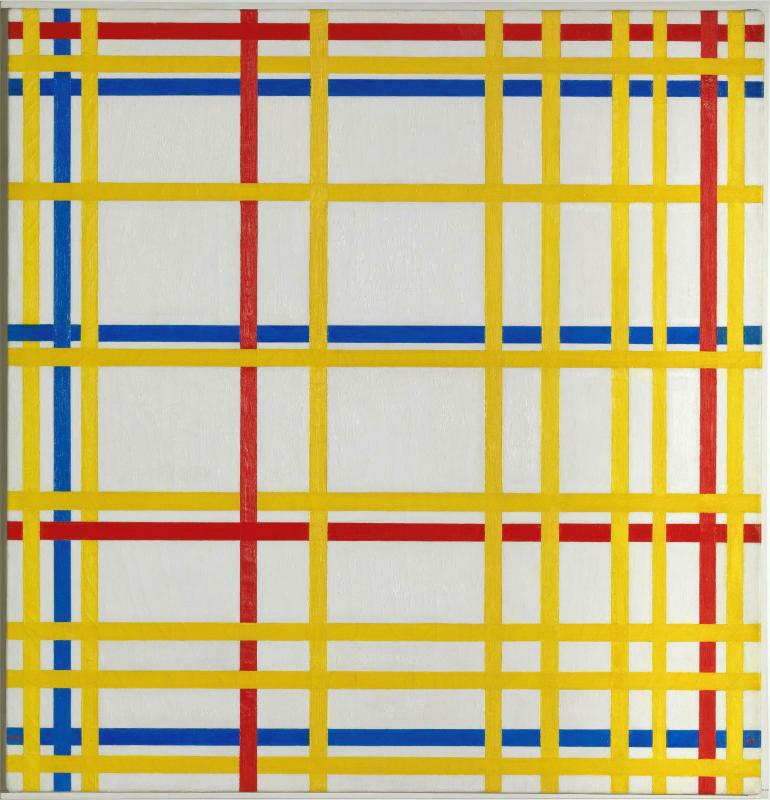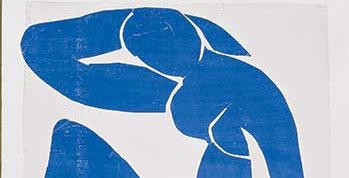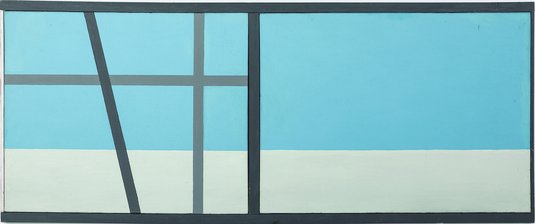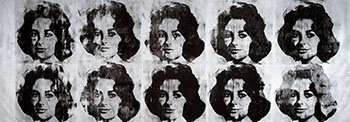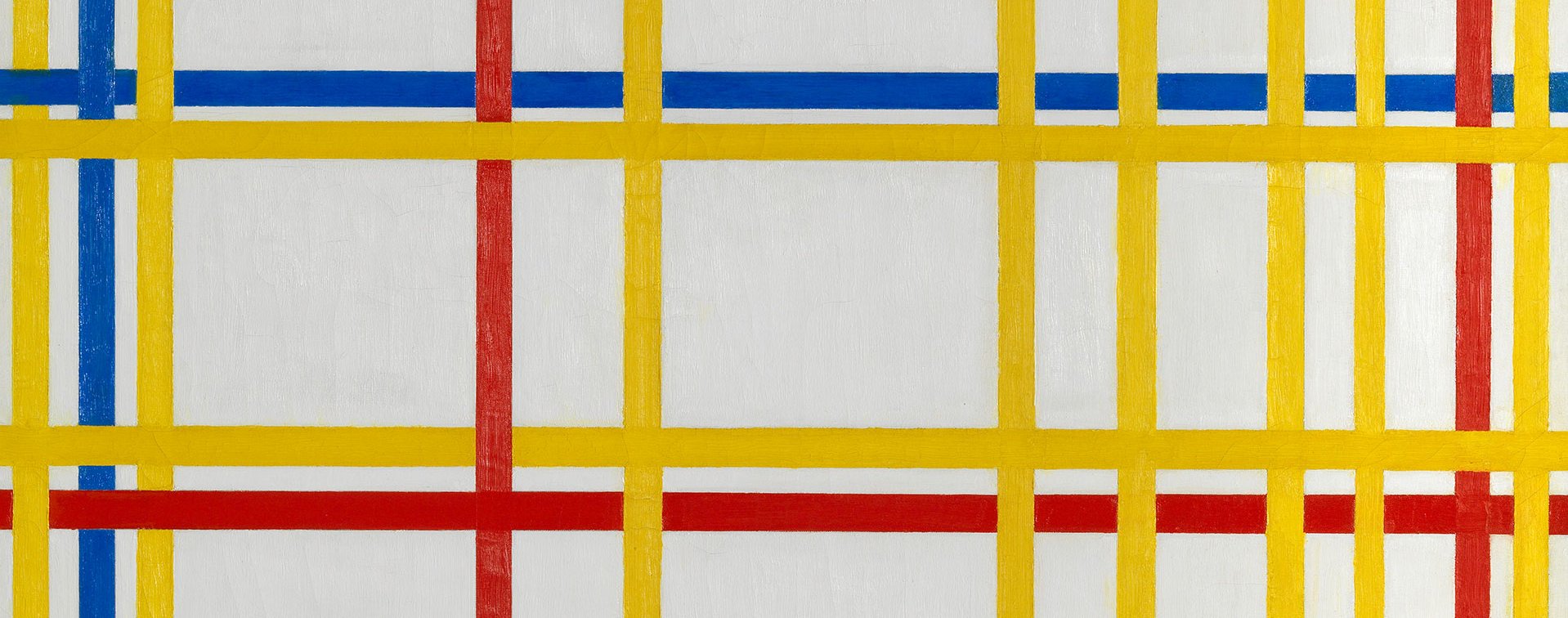
Focus on... "New York City" by Piet Mondrian
New York City’s architectural gigantism, orthogonal urban planning and frenetic movement had a profound impact on European artists in exile, including Mondrian, who arrived there in 1940. New York City belongs to a series of four paintings created between 1941 and 1942. Two of them, New York City 1 (held at the Kunstsammlung in Düsseldorf) and New York City 2 (SFMoMA, San Francisco), still bear their coloured paper strips and are considered unfinished. The version in the Centre Pompidou’s collection, the only one regarded as complete, and New York City 3 (Museo Thyssen-Bornemisza, Madrid) were both executed in oil paint.
The spatial organisation of New York City is built upon a binary system (above/below) of interwoven grids, comprising fifteen yellow lines, four blue ones, and four red. Their uniform width, matching the thickness of the canvas frame, reinforces the composition’s flatness. The variation in colour and placement of these intersecting lines, which follows the neo-plasticist dialectic of identity and difference, heightens the optical dynamism of the structure—an effect influenced both by New York’s electric lighting and the syncopated rhythm of boogie-woogie music, which inspired Mondrian’s later works, such as Broadway Boogie-Woogie (1942–1943, MoMA, New York). The painting, worked on a flat surface but meant to be viewed upright, was likened by journalist and artist Charmion von Wiegand, who witnessed its creation, to “the geometric rhythm of the city’s traffic”, making it a metaphor for New York itself.
The painting, worked on a flat surface but meant to be viewed upright, was likened by journalist and artist Charmion von Wiegand, who witnessed its creation, to “the geometric rhythm of the city’s traffic”, making it a metaphor for New York itself.
Photographed in October 1941 by Emery Muscetra in Mondrian’s 52nd Street studio, the painting was first exhibited in New York at the artist’s solo show at the Valentine Gallery in 1942. It exemplifies Mondrian’s final explorations, based on a preparatory technique of weaving coloured paper strips layered onto the canvas, creating a textured grid. This method, which art historian Yve-Alain Bois described as producing a “flat depth”, generates repetitive, symmetrical yet pulsating compositions within an all-over space that is dense, uniform, and luminous.
The striking visual power of the painting, amplified by the brilliance of its yellow hues and its exceptional scale, magnificently conveys the “new energy” that Fernand Léger also discovered upon arriving in New York in 1940. He hailed the city as “the most colossal spectacle in the world”, a sentiment reflected in the intensity of colour and movement in his own American works.
Following Mondrian’s death, New York City passed into the hands of his heir, Harry Holtzman, before being acquired by Sidney Janis, who owned many of the artist’s late masterpieces—works whose legacy would prove fundamental to 20th-century art. In 1984, it entered the collection of the Centre Pompidou. ◼
Related articles
Piet Mondrian, New York City, 1942
Oil on canvas, 119,3 x 114,2 cm
© Centre Pompidou
